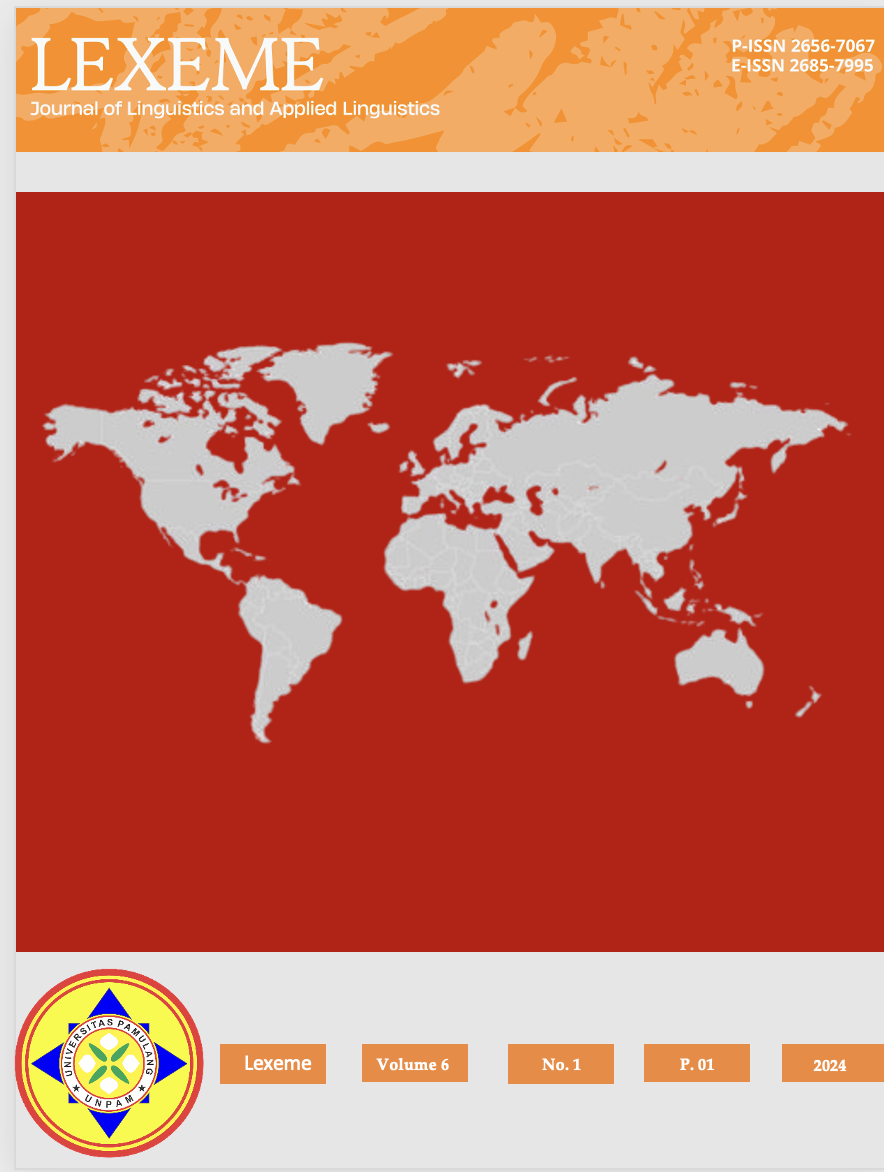The Use of Non-Observance Maxims that Trigger Implicature in Ganjar Pranowo’s Interview
Keywords:
cooperative principle, Ganjar Pranowo, implicature, interview, non-observance maximAbstract
This study aims to analyze the use of non-observance maxims that trigger implicatures in the interview with Ganjar Pranowo, a prominent political figure in Indonesia. Employing a qualitative approach, the primary data source utilized was Youtube video of the exclusive interview with Ganjar Pranowo by TvOne, which were transcribed for analysis. Drawing on Grice's theory of conversational implicature, highlighting the implicit meanings conveyed through deviations from the four maxims of effective communication: quantity, quality, relation, and manner, this research delves into Ganjar Pranowo's communication strategies, particularly focusing on deviations from the cooperative principles in communication. This study reveals that Ganjar Pranowo frequently employs particularized implicatures to convey additional messages beyond the literal meaning of his words. This approach not only adds layers of meaning but also showcases the strategic use of language to imply information indirectly. Additionally, the study identifies instances where Ganjar Pranowo deliberately limits the information provided during interviews, further complicating the interpretative process for listeners. These findings illustrate the complexity of human communication dynamics, where implied messages and implicit communication strategies significantly influence the understanding of spoken words. This study offers profound insights into Ganjar Pranowo's adept use of language and implicatures to communicate nuanced messages. It highlights the intricacies of human communication processes and the subtle dynamics of interaction between speakers, emphasizing the importance of context and inference in effective communication.
References
Adena, T., & Mulia, H. (2024). Kajian Linguistik dan Sastra Implicatures Generated from Non-Observances Maxim in The Interview of the Indonesian President Implikatur yang dihasilkan dari Prinsip yang tidak dipatuhi dalam Wawancara dengan Presiden Indonesia. 3(2). https://online-journal.unja.ac.id/kal
Aisya, N. (n.d.). E-Journal of English Language & Literature AN ANALYSIS OF FLOUTING OF MAXIM PERFORMED BY POLITICIAN GUESTS IN MATA NAJWA TALK SHOW IN THE EPISODE OF ADU LANTANG JELANG PENENTUAN AND BABAK AKHIR PILPRES. E-Journal of English Language and Literature, 8(4). http://ejournal.unp.ac.id/index.php/jell
Bahasa, J., Rahmawati, W., & Laila, M. (2022). A Pragmatic Equivalence of Violating Maxims in Novel Translation of Divergent. 7(2). https://journal.iaingorontalo.ac.id/index.php/al
Basya, A. F. (2017). AN ANALYSIS ON THE NON-OBSERVANCE MAXIMS OF COOPERATIVE PRINCIPLE IN LARRY KING SHOW SPECIAL: JOHNNY DEPP.
Evayanti Munthe, D. (n.d.). NON-OBSERVANCE MAXIMS IN “SONIC THE HEDGEHOG” MOVIE.
Gunatika, I. M. W. A., Candra, K. D. P., & Utami, N. M. V. (2021). The Types of Non-Observance Maxims Performed by the Main Character in Knives Out Movie. ELYSIAN JOURNAL English Literature, Linguistics and Translation Studies, 1, 88–97.
Jalal Sa, A., Hassan, dullah, & Info, A. (2022). A Pragmatic Study of Non-Observance Maxims in Selected Political Speeches Keywords:-cooperative principle-observance-non-observance-conversational maxims. In Journal of Language Studies (Vol. 5, Issue 2).
Khusna, F. A., Aliyah, S. L., & Asyifah, D. A. (2021). INVESTIGATING THE USE OF MAXIMS IN THE EFL CLASS PRESENTATION: A PRAGMATIC STUDY. SAGA: Journal of English Language Teaching and Applied Linguistics, 2(2), 133–144. https://doi.org/10.21460/saga.2021.22.80
Moeschler, J. (n.d.). Conversational and conventional implicatures. https://www.researchgate.net/publication/260319066
Pertiwi, W. E. (2023). Non-Observance Maxims in Banyumasan Humor Speech. Journal Corner of Education, Linguistics, and Literature, 2(3), 234–243. https://doi.org/10.54012/jcell.v2i3.124
Rachmah, Z., Widya, & Putri, E. J. (2022). The Non-observance of Maxims that Trigger Implicature in Cruella Movie (2021). E-Journal of Linguistics, 16(2), 264–272.
Rachman, A., Yochanan, E., Samanlangi, A. I., & Purnomo, H. (2024). METODE PENELITIAN KUANTITATIF, KUALITATIF DAN R&D (B. Ismaya, Ed.; Vol. 1). CV Saba Jaya Publisher. https://www.researchgate.net/publication/377469385_METODE_PENELITIAN_KUANTITATIF_KUALITATIF_DAN_RD?enrichId=rgreq-e00af6a849f98c2d2de4f653ebcbd5da-XXX&enrichSource=Y292ZXJQYWdlOzM3NzQ2OTM4NTtBUzoxMTQzMTI4MTIxODI4NzE0MUAxNzA1NTQ1NzMzNDc5&el=1_x_2&_esc=publicationCoverPdf
Saradifa, A. S. (2020). Non-Observance Of Grice’s Maxims Found In “The Grapevine: Gossip At Work, What Should You Do As A Leader?” Drama Series Script Produced By The Calvin Company. Journal of English Literature, Linguistic, and Education , 1(1), 1–8.
Yule, G. (2016). PRAGMATIK. Pustaka Pelajar.
Zahra, T. N., & Suyudi, I. (2023). THE NON-OBSERVANCE OF MAXIMS IN DIALOGUES OF HARRY POTTER AND THE CURSED CHILD BOOK. Journal of Language and Literature, 11(2), 209–218. https://doi.org/10.35760/jll.2023.v11i2.9169
Downloads
Published
How to Cite
Issue
Section
License
Copyright (c) 2024 Jihan Nurul Fadilah, Dinda Syifa Saiddina, Cecep Agus

This work is licensed under a Creative Commons Attribution-ShareAlike 4.0 International License.







